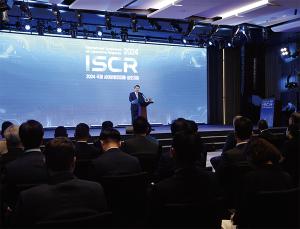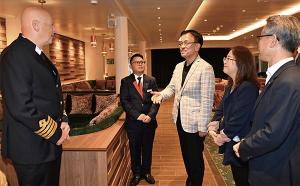 |
||
The era when the West began to trade with the East via sea routes is known as the Age of Exploration. Some people think of the Age of Exploration, which spanned from the 15th to the 17th centuries, as the beginning of full-scale maritime trade between the West and the East. However, trade between the East and West began much earlier than that. There were spice routes by sea as well as by land, including the Silk Road, a trade network across the Eurasian continent that began to take shape as early as BC, and once stretched from the Roman Empire to East Asia, including China. And since then, the Philippines has served as a transit point for maritime trade. The Laguna Copperplate Inscription, the earliest known written document in the Philippines, records trade between the Philippines and other countries at the time. This is evidence that the Philippines at the time traded with the Middle Kingdom of India and the Siribijaya Empire as well as with China before the Tang Dynasty. Research results show that the Philippine island of Luzon at the time functioned as an intermediate trade port in the process of paying tribute or trading with China from various countries. China at the time also passed through the Philippine Islands to benefit from trade with Southeast Asia, India, and Arab countries, and as a result, Chinatowns were formed in Holo Island and Manila around the 7th century. The Philippine Islands are a representative typhoon source and a disputed area due to civil war, and have expanded into the sea beyond China’s Silk Road, which began in the 8th and 9th centuries. The Maritime Silk Road has historically recorded a route through the Philippines. As such, there have been countless exchanges and trade between China and the Philippines since ancient times, which explain why artifacts believed to be from ancient China have been found in Philippine territorial waters.
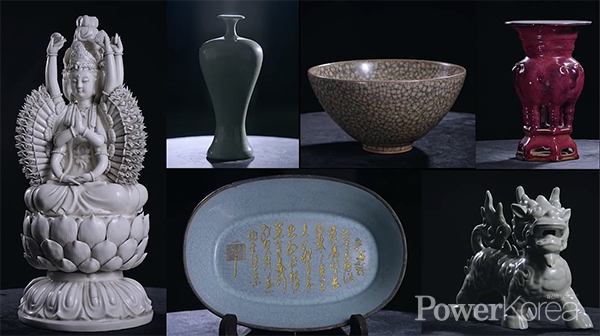 |
Artifacts of possible ancient Chinese origin unearthed in the Philippines
The world began to recognize Asian artifacts
Cross-verification of artifacts and ancient documents has proven that the Philippines and China have been trading since ancient times, most likely as early as the Song Dynasty. As such, Chinese-style ceramics have been found in various burial sites and artifact excavations in the Philippines, and many artifacts have been unearthed. Geosung General Construction Chairman Heungyong Lee is a person who has been attracting attention for introducing to many people the relics presumed to be ancient Chinese artifacts unearthed in the Philippines. After building a monastery in Korea, he has been engaged in architecture-related activities in the Philippines for over 20 years, including designing and supervising the Cathedral of St. Andrew Kim Dae-gun in Lolomboi, Philippines. “I am even more moved and happy when Father Kim Dae-geon, Korea’s first Catholic priest, was selected as a UNESCO World Monument in 2021. It was very worthwhile” says Lee. While doing construction work in the Philippines, he came across five pieces of ceramics that an employee had taken on his cell phone. Since the elegance of the pottery discovered at this time was extraordinary, he checked and appraised the actual pottery. As a result of the analysis, he was told that the pottery was believed to be from the Song, Yuan, and Ming periods of China. This became an opportunity for him to excavate ancient artifacts in the Philippines, and he is currently starting various exhibitions to promote Asian artifacts to the world.
 |
Excavation for 6 years
Presumed to be ‘Yuyao’ porcelain from the Song Dynasty in China
He has been excavating various relics, including pottery and Buddhist statues, since June 2018. “In June 2018, I began excavating under a banana farm on a small island in the southern Philippines, a three-day boat ride from Manila, and I ‘m still continuing the work” says Lee. The artifacts, he said, are believed to have been found after the stranded vessel was buried in mud and muck, moved ashore through tectonic shifts over the centuries, and then discovered during construction onshore. The majority of the artifacts found are believed to be Song Dynasty “Yuyao” porcelain. The Song Dynasty is considered to be the most culturally and artistically advanced dynasty in Chinese history. Improved rice varieties greatly increased food production, and the population was about twice as large as during the Han Dynasty, with an estimated 90 million people living in the Northern Song Dynasty. As a result, along with the economic revolution, trade surged, which naturally included ceramics and other art objects. “Yuyao” ceramics are rare artifacts, with only a few dozen known to exist in the world, and Yuyao is one of the five great guan yos of the Song Dynasty. Made primarily of celadon, it is highly regarded aesthetically for its pristine blue color, which has been likened to the sky after a rain. Lee brought in about 7,000 to 8,000 artifacts from the Philippines to Korea, and is planning and conducting an exhibition so that people from all over the world can see them.
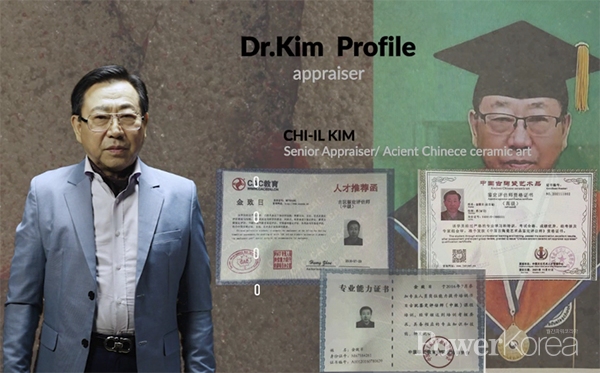 |
Appraiser Kim Chi-il, an expert on ancient Chinese crafts who recently visited Korea, says “They are presumed to be Northern Song and Southern Song based on scientific verification of glazing and Bingryeolmun”
Appraiser Kim Chi-il, an expert on ancient Chinese crafts who recently visited Korea, said, “It was a very surprising discovery when I first encountered these ceramics. This is because it shows a different truth from the truth of history that we have known so far. “Scholars who believe they are the best experts may first create a wall of doubt when they see these amazing ceramics.” Experts say that the color, smell, and shape of the pottery are the first ways to determine which dynasty it came from, and that the appearance of these pieces is distinctly different from chemical glazes, which are easy to imitate because they are made with a gemstone called agate. This is the characteristic of agate glaze, Kim explains, and the subtle glow that shines through the color of the surface gives the pottery a sense of artistry and exoticism. Scholars look especially closely at the unglazed areas, checking for certain marks and odors, and the replicas being made today are subjected to various chemical treatments to make them look like old pottery, he said. Closer observation of the catalyst state at a given trace site can further confirm the authenticity of the pottery. “The best appraisers can estimate the age of an ice circle based on its shape alone. This is because no modern production can mimic the natural formation of ice circles over hundreds of years. Experts appreciate the way the glaze and clay expanded and arranged themselves over time. I was impressed by the centuries-old shape of the glaze and clay, which cannot be found in modern porcelain ice rings” says Kim. “The form and shape of these ceramics are definitely Chinese. Through scientific verification, we know that the period of the ceramics is Northern Song and Southern Song. In terms of historical facts, we can say that it is the history of China since the 8th and 9th centuries, the Southern Song and Northern Song, and a long period after that.”
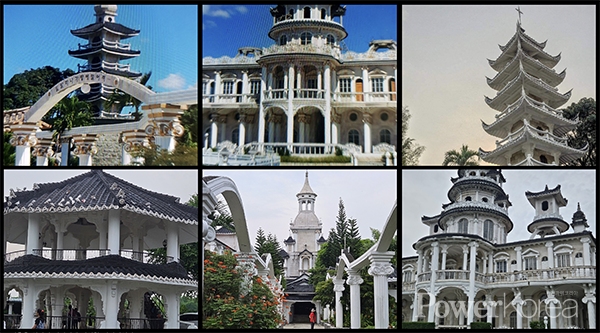 |
Turning a French castle into a museum of artifacts
Exhibitions and events will be awe-inspiring
The Louvre in Paris, the British Museum in the United Kingdom, the Metropolitan Museum in the United States, and the Vatican Museums in Vatican City are among the world’s top four museums, and they all draw crowds with their marvelous objects. What Lee is currently preparing is to show people the various amazing artifacts he has unearthed. He purchased an old castle located in Dijon, France, and is preparing it as a space to display the excavated artifacts. Dijon is the central city of the Burgundy region, southeast of Paris, and is famous for its wine and mustard. There are many famous buildings, including Notre Dame Cathedral, the Cathedral of Saint-Beigne, the Palace of the Grand Duke of Burgundy, and the Church of Saint-Michel. In particular, the Burgundy region, where Dijon is located, is also the production area of Burgundy wine, one of the two major mountain ranges in the French market, so it is a place where you can enjoy both the architecture and the wine. “The castle is currently operating as a five-star hotel, and I am in the process of signing a contract to purchase the castle” says Lee. The castle is more than 700 years old, and its basement is home to a wine cellar, as the region is known for. “The wine warehouse is perfect for a museum. It’s not just a hotel and museum combined, but I’m planning to create a living museum” says Lee. He plans to place a couple of artifacts in each room for the upper echelons of society, and to host various events such as dinners. “I’m going to create an exhibition space in addition to the rooms, and I’m going to organize a space where I’m going to bring in musicians and have concerts” says Lee.
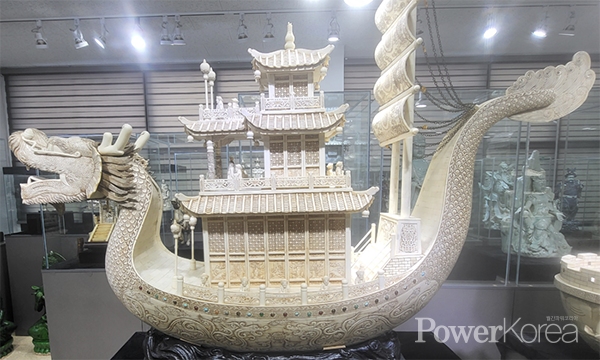 |
Displaying artifacts from Europe to Monaco
Applying for the Guinness Book of World Records for ‘largest number of Buddha statues in Song Dynasty’
In addition to the port museum utilizing Dijon’s old castle, Lee is working to create museums in various places in Europe. “In addition to Dijon, I am currently in the process of purchasing the Suites Interlaken Victoria Hotel and turning it into a hotel and museum in the same way. In addition, I’m currently looking into Munich, Switzerland, and Beren” says Lee. He plans to build museums and hotels in three locations, starting with Dijon, to showcase artifacts, and is also preparing an exhibition in the form of a collection. “High-ranking officials in Monaco are showing interest, so we are planning to exhibit it as a collection. Monaco currently has a maritime museum. There are no other museums. The Monaco government is building a city in the mountains due to land size issues, and Monaco is hoping that our exhibition will be located in that city” says Lee. Monaco is one of the most visited places in the world, and is often referred to as the Macau of Europe for its casinos and entertainment. Monaco is home to F1 racing, but some say the Mediterranean Sea is the only thing to see here. “That’s why I think Monaco is also thinking about a museum for tourists. I have visited twice and discussions are ongoing” says Lee. Lee has now applied to the Guinness Book of World Records for the record for the “largest collection of Song Dynasty Buddhist statues,” which will be judged in August and September, and is also organizing various other activities to publicize the artifacts.
강영훈 기자 kangy423@naver.com

